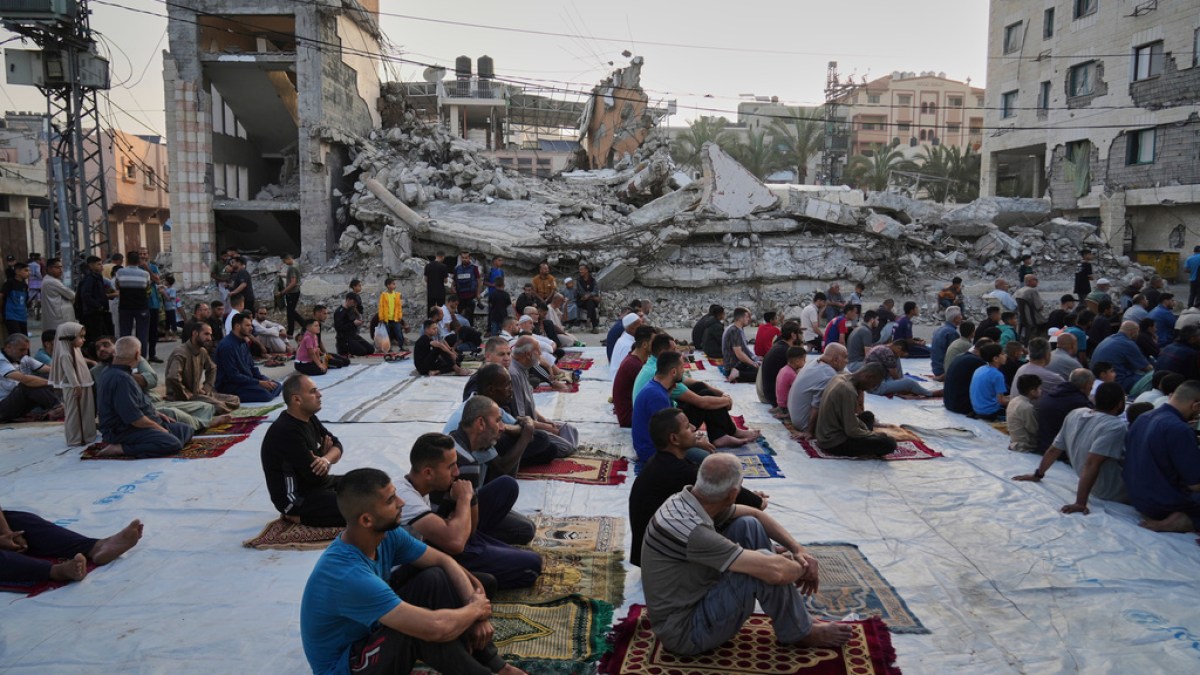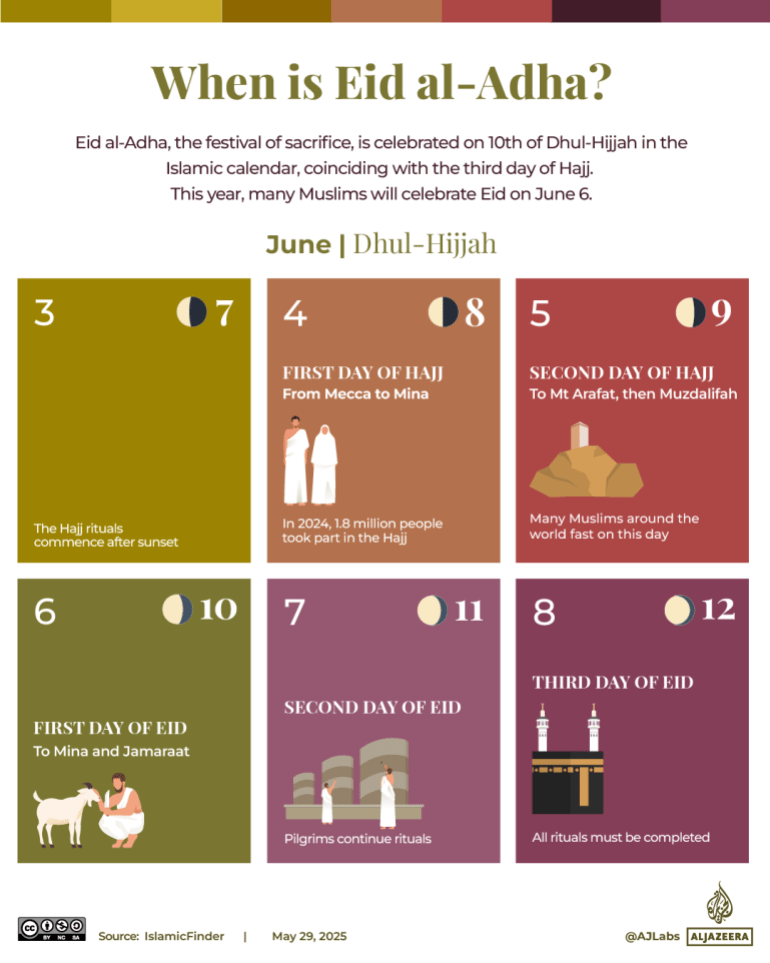Muslims around the world celebrate Eid al-Adha | Religion News
Muslims around the globe are celebrating Eid al-Adha, one of the biggest holidays in the Islamic calendar that commemorates sacrifice and submission to God.
The festival, running from June 6-9, honours the Prophet Ibrahim’s willingness to obey God’s command that he sacrifice his only son Ismail, ignoring the devil’s attempts to dissuade him from the act.
The devil appeared before Ibrahim three times, but the prophet responded by throwing stones, driving him away. As he was about to kill his son, God stayed his hand and spared his son, giving him a lamb to sacrifice instead.
The “Feast of Sacrifice” is traditionally marked by the slaughter of an animal, typically a goat, sheep, cow, bull or camel, with the meat shared among neighbours, family members and the poor.
The start of the event coincides with the final rites of the annual Hajj, the once-in-a-lifetime pilgrimage to the holy city of Mecca, Saudi Arabia, observed by adult Muslims.
In remembrance of Ibrahim’s resistance to Satan, pilgrims at Hajj participate in a symbolic “stoning of the devil” at the Jamarat complex in Mina, near Mecca.
The stoning ritual takes place at the three spots where it is said the devil tried to dissuade Ibrahim from obeying God, represented by three concrete walls.
Pilgrims collected their pebbles overnight on Thursday from Muzdalifah, an area located a few kilometres away from Arafat, a hill outside the city of Mecca with great spiritual significance.
On Friday, an estimated 1.6 million-plus pilgrims stoned the devil, throwing their pebbles at the concrete walls in Mina.
For some, the ritual marks a solemn moment – a complete submission to God. For others, it represents a victory over evil.
















